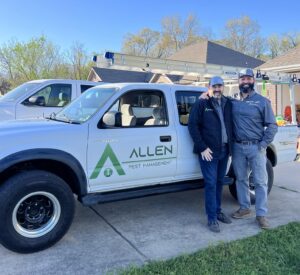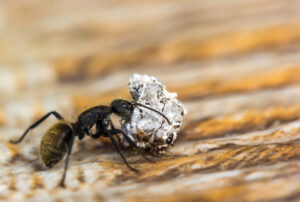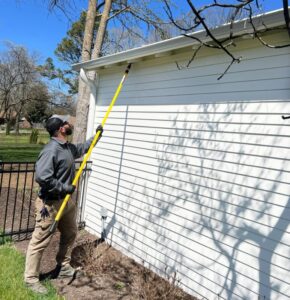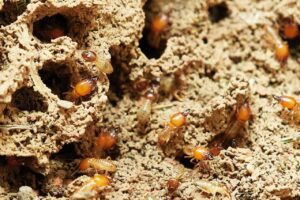Ants are a common sight worldwide, with thousands of species exhibiting various behaviors, habitats, and impacts on their environments. Among these, carpenter ants hold a distinct place due to their unique nesting habits and potential damage to wooden structures.
Understanding the differences between carpenter ants and other ant species is crucial for homeowners and pest management professionals alike. This blog post aims to shed light on these differences and offer insights into effective carpenter ant control measures.
What Sets Carpenter Ants Apart?
Unique Nesting Habits
Carpenter ants are renowned for their ability to create nests in wood. Unlike termites, they do not consume wood but remove it to create intricate galleries for their colonies. This behavior can lead to significant structural damage over time if not addressed promptly.
Physical Characteristics
Carpenter ants are larger than many other ant species, with workers ranging in size from 6 to 12 mm. They typically exhibit a black coloration, though some species may have reddish or yellowish hues. Their size and color help distinguish them from other ants, along with their smooth, rounded thorax.
Diet and Feeding Behavior
While carpenter ants prefer to nest in wood, their diet is quite varied. They are omnivorous, feeding on a combination of plant and animal matter, including sweets, meats, and other insects. This varied diet helps them thrive in diverse environments.
Understanding Carpenter Ant Behavior
Colony Structure
Carpenter ant colonies are structured with a clear hierarchy, including a queen, workers, and, at certain times of the year, winged swarmers. The presence of swarmers indoors often indicates an established colony within the structure.
Signs of Infestation
Identifying a carpenter ant infestation involves looking for signs such as sawdust-like material (frass) near woodwork, hearing faint rustling noises within walls, and spotting worker ants foraging for food.
Effective Carpenter Ant Control Strategies
Preventive Measures
Preventing carpenter ant infestations begins with eliminating moisture and wood-to-ground contact around the home. Regular inspections for water damage and sealing entry points can also deter these pests.
Professional Treatment Options
For active infestations, professional pest control services are often necessary. Techniques may include targeted treatments to eliminate colonies and ongoing monitoring to prevent re-infestation.
Understanding and Managing Carpenter Ants: A Guide to Effective Pest Control
Carpenter ants differentiate themselves from other ant species through their unique nesting habits, physical characteristics, and the potential damage they can inflict on wooden structures. Recognizing these differences is crucial for effective pest management.
Dealing with carpenter ants requires a nuanced understanding of their behavior, habitat preferences, and the signs of infestation. Preventing and controlling these pests involves a combination of homeowner vigilance and professional intervention.
Allen Pest Management is equipped with the expertise and tools necessary to tackle carpenter ant infestations head-on. Our approach integrates preventive measures to discourage carpenter ants from making your home their nesting ground, alongside targeted treatment options designed to eliminate active colonies and prevent future infestations.
Don’t let carpenter ants undermine the integrity of your property. Take action today by reaching out to Allen Pest Management. Let us work together to safeguard your home against these unwelcome invaders with effective, reliable solutions. Contact us now for a consultation and take a significant step towards a carpenter ant-free environment.







